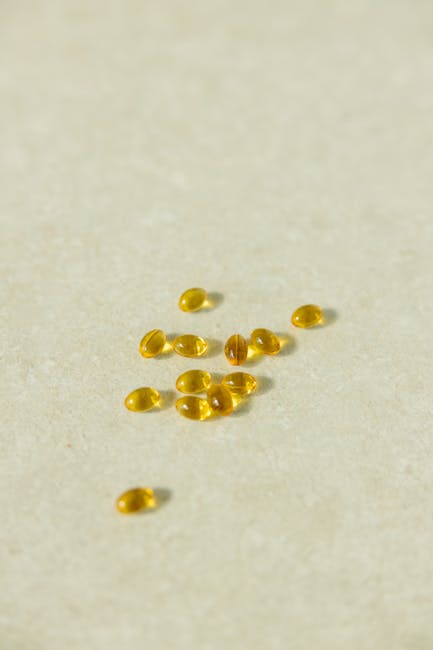Optimizing Your Fitness Routine: A Comprehensive Guide
The pursuit of optimal fitness is a journey, not a destination. Achieving your fitness goals, whether it’s weight loss, muscle gain, improved endurance, or overall well-being, requires more than just showing up at the gym. It necessitates a strategic, personalized approach that considers a multitude of factors. This guide will delve into key areas to help you optimize your fitness routine, maximizing your results and minimizing the risk of injury.
1. The Foundation: Goal Setting & Assessment
Before launching into any exercise program, clearly define your objectives. What do you want to achieve? Be specific. Instead of “get in shape,” aim for “lose 10 pounds of fat and gain 5 pounds of muscle in six months.” Measurable goals provide direction and motivation.
Next, assess your current fitness level. This is a crucial step often overlooked. Consider these assessments:
- Body Composition Analysis: Methods like bioelectrical impedance analysis (BIA), skinfold measurements, or even a simple body fat percentage estimate (using online calculators or professional assessment) can provide baseline data.
- Cardiovascular Fitness: Determine your resting heart rate. Perform a timed walk/run test or a treadmill test to assess your endurance levels.
- Strength Assessment: Use a weight lifting app or a trainer to guide you. Test your one-rep max (1RM) or perform rep-based tests (e.g., max push-ups, squats, or pull-ups).
- Flexibility and Mobility: Perform basic stretches to assess range of motion and identify areas of tightness or restriction. Consider mobility drills like those found in yoga or Pilates.
Document these initial assessments. Repeat them periodically (e.g., every 4-8 weeks) to track progress and make necessary adjustments to your routine.
2. Exercise Selection: Tailoring Your Workout
Your exercise selection should align directly with your goals.
- For Weight Loss: Focus on a combination of cardiovascular exercise and resistance training. High-Intensity Interval Training (HIIT) can be highly effective for burning calories and boosting metabolism. Incorporate compound exercises (squats, deadlifts, bench presses) that work multiple muscle groups simultaneously.
- For Muscle Gain: Prioritize resistance training with progressive overload. Gradually increase the weight, reps, or sets as your muscles adapt. Focus on compound exercises and ensure adequate protein intake.
- For Endurance: Concentrate on activities that challenge your cardiovascular system, such as running, cycling, swimming, or brisk walking. Vary your training intensity (e.g., long slow distance, tempo runs, interval training) to improve different aspects of endurance.
- For General Fitness: Aim for a balanced routine that includes cardio, resistance training, and flexibility work.
Exercise Variety and Progression are Critical: Avoid plateaus by periodically changing your exercises, rep ranges, and sets. Regularly introducing new exercises and increasing the intensity or volume will challenge your body and stimulate further adaptation. Consider these strategies:
- Exercise Swaps: Replace exercises like squats with lunges, bench press with incline dumbbell press, etc., to work the same muscle groups with a new stimulus.
- Rep and Set Variations: Change your rep ranges (e.g., 6-8 reps for strength, 12-15 for hypertrophy, or higher for endurance) and sets (e.g., 3 sets, 4 sets, or 5 sets).
- Tempo Manipulation: Control the speed of your movements. Slow down the eccentric (lowering) phase to increase time under tension, enhancing muscle growth.
- Progressive Overload: The most fundamental principle. Gradually increase the weight you lift, the reps you perform, the sets you complete, or the time you spend exercising.
3. Training Frequency and Volume: Finding the Right Balance
Finding the optimal frequency and volume of training is essential for optimal results.
- Frequency: This refers to how often you train each muscle group or engage in cardiovascular exercise per week. The ideal frequency varies depending on your training goals, experience level, and recovery capacity. Beginners might train each muscle group 2-3 times per week. More experienced lifters can often train each muscle group 1-2 times per week, using higher volumes. Cardio frequency can range from 2-7 times per week, depending on your goals and other factors.
- Volume: Volume is calculated by multiplying the number of sets, reps, and weight used. More volume, often results in greater muscle growth if paired with sufficient recovery. It’s crucial to balance volume with recovery to prevent overtraining. Too much volume, without sufficient rest, can lead to decreased performance and a higher risk of injury. The ideal volume depends on individual factors and varies.
4. Nutrition: Fueling Your Performance
Nutrition is the cornerstone of any successful fitness program.
- Caloric Balance: Understand the concept of calories in vs. calories out. To lose weight, you need to consume fewer calories than you burn. To gain muscle, you need to consume more calories than you burn. Calculate your basal metabolic rate (BMR) and total daily energy expenditure (TDEE) using online calculators.
- Macronutrient Ratios: The ideal macronutrient ratio (protein, carbohydrates, and fats) depends on your goals.
- Protein: Crucial for muscle repair and growth. Aim for 1.6-2.2 grams of protein per kilogram of body weight per day if you are resistance training.
- Carbohydrates: Provide energy for exercise. Choose complex carbohydrates over simple sugars. Focus on consuming carbs around workouts to maximize performance and recovery.
- Fats: Essential for hormone production and overall health. Choose healthy fats like those found in avocados, nuts, seeds, and olive oil.
- Hydration: Drink plenty of water throughout the day, especially before, during, and after exercise. Dehydration can negatively impact performance and recovery.
- Meal Timing: Consider timing your meals to optimize performance. Consume a meal or snack with carbohydrates and protein before and after workouts.
- Supplementation: Consider supplements that can support your goals, such as protein powder, creatine monohydrate, and pre-workout supplements, but prioritize a balanced diet before turning to supplements. Always consult a healthcare professional before taking any supplements.
5. Recovery: Rest and Regeneration
Recovery is just as important as the workout itself. Your body adapts and rebuilds during rest.
- Sleep: Prioritize 7-9 hours of quality sleep per night. Sleep is crucial for muscle repair, hormone regulation, and overall well-being.
- Active Recovery: Incorporate light activities like walking, yoga, or stretching on rest days to improve blood flow and reduce muscle soreness.
- Massage and Foam Rolling: These techniques can help release muscle tension and improve flexibility.
- Nutrition: Ensure you are consuming adequate calories and nutrients to fuel your recovery.
- Rest Days: Take at least one full rest day per week to allow your body to fully recover.
- Stress Management: Manage stress levels, which can impede recovery and hinder your fitness goals.
6. Monitoring and Adjustments
Regularly monitor your progress and make adjustments as needed.
- Track Your Workouts: Keep a workout journal or use a fitness app to track your exercises, sets, reps, weight, and rest times. This allows you to monitor your progress and identify areas for improvement.
- Listen to Your Body: Pay attention to any pain or discomfort. Don’t push through pain. Rest or modify your workout if necessary.
- Re-evaluate Your Goals: Periodically revisit your goals to ensure they still align with your desires. As you progress, you might need to adjust your goals or set new ones.
- Seek Professional Guidance: Consider working with a certified personal trainer or registered dietitian for personalized guidance and support. They can help you create a tailored program, monitor your progress, and make adjustments to your routine as needed.
- Consistency is Key: The most important factor in optimizing your fitness routine is consistency. Make exercise and healthy eating a regular part of your lifestyle. Be patient, stay committed, and celebrate your achievements along the way.





